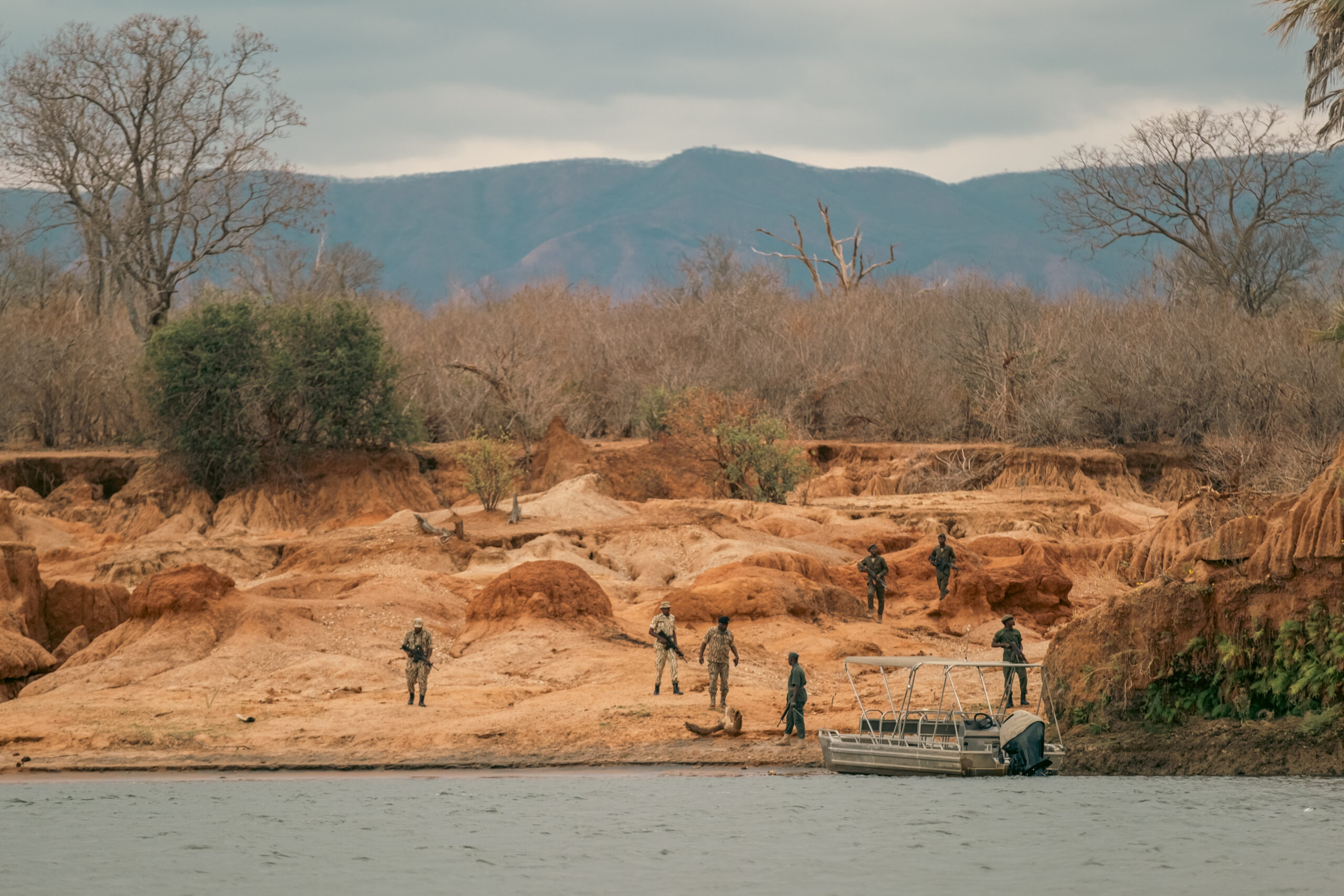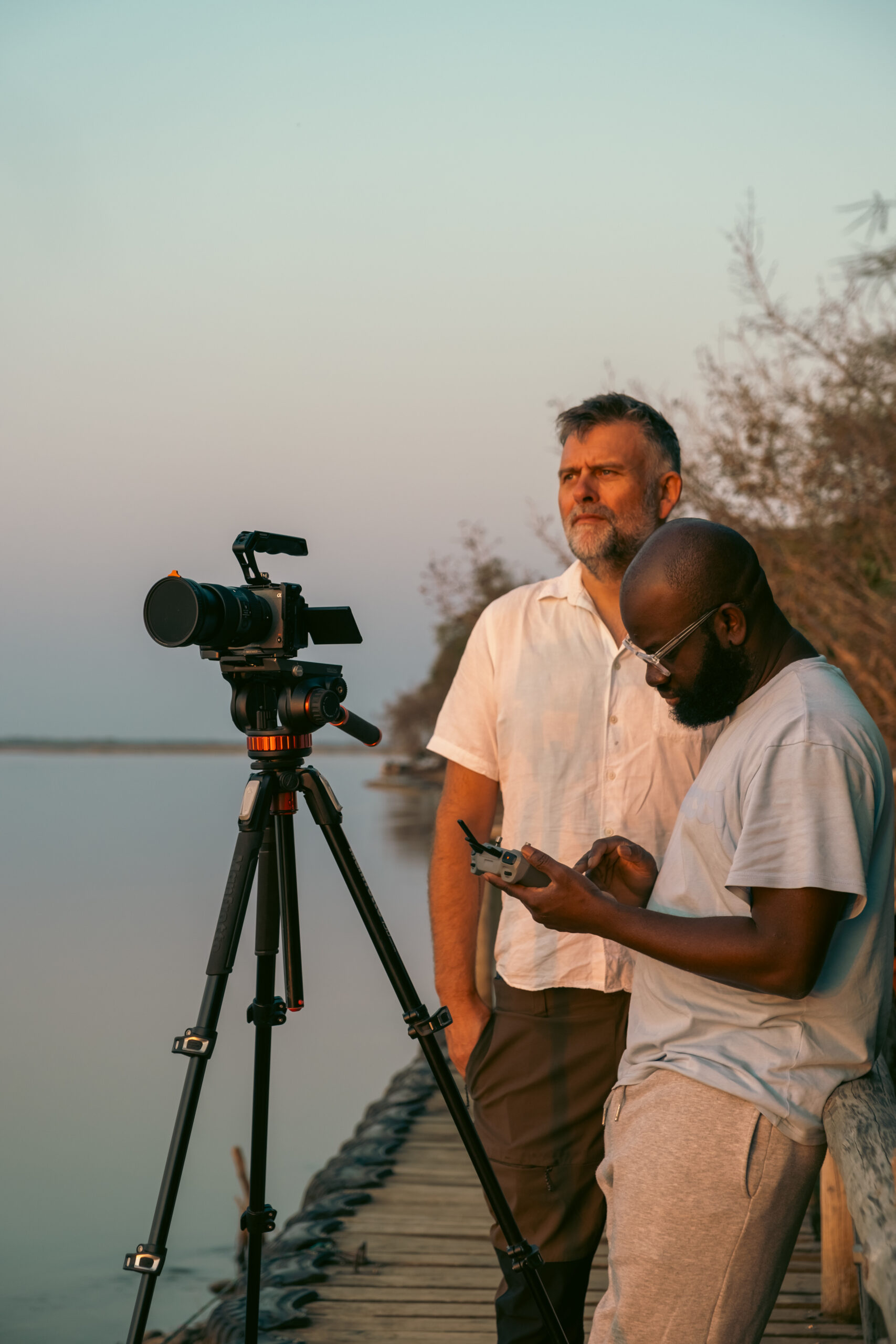The Monitoring of the Illegal Killing of Elephants (MIKE) is an animal protection programme operating in 80 sites across Africa and Asia. Our film team travelled to Lower Zambezi National Park in Zambia to produce a collection of documentaries about the rangers. The end-goal was to attract donors.
We connected with Zimbabwean cinematographer Nigel, a member of our international collective of filmmakers.
Our London team camped out on the banks of the Zambezi for ten days, surrounded by herds of elephants and the vast wildlife of the floodplains.
The park rangers troop helped our team capture the watchful bond they share with the land and the animals.
360-degree filming immerses the viewer in the landscape and the sensory experience of being a ranger.
Unlike fixed cameras, 360-degree cameras capture footage in every direction simultaneously, allowing viewers to curate their own experience by ‘dragging’ the screen and uncovering all perspectives.
The park and landscape posed distinct challenges for the crew.
Strategic Agenda’s cinematographer Joseph Edusin explains that he mentally prepares himself for things to go wrong in difficult environments as they inevitably do in the field.
On several occasions the team's boat got stuck in dried-up riverbeds. Accustomed to this, the rangers easily freed the boat.
Attaching the 360-camera to the bottom of the drone caused the sensors to think the drone was on the ground when it was still in flight. The team worked to find techniques to get the drone down.

Strategic Agenda director and producer Sam Callis wants to go further with 360 technology. One idea he’s exploring is to create interactive films with ‘clickable assets’ that navigate to different learning pathways, like video games. These films could be hosted on YouTube, where they could provide education and capacity-building to broad audiences.
Need innovative storytelling for your next development project?

Strategic Agenda’s Sam Callis and Joe Edusin on site in Zambia.

Network Hub, 300 Kensal Road, London, W10 5BE, UK
We deliver comprehensive communications strategies that deliver on your organisation’s objectives. Sign up to our newsletter to see the highlights once a quarter.